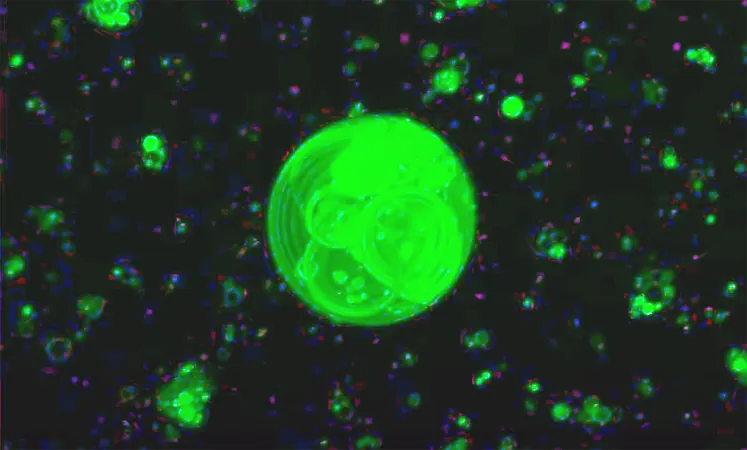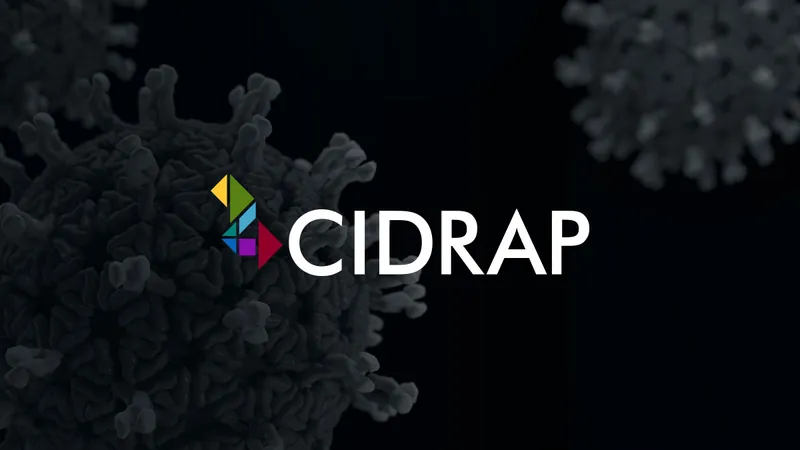
The Groundbreaking Discovery of How Earth’s First Cells Formed – A New Era of Understanding Life’s Origins
2025-03-29
Author: Rajesh
The Role of Phosphates in Early Life
Previous studies suggest that simple molecules, such as fatty acids, existed in the primordial soup of early Earth. This new research highlights the importance of phosphate groups—essential components of modern cell structures—which may have been incorporated into protocells earlier than previously suspected. Researchers propose that a process known as phosphorylation could have catalyzed the formation of more complex, double-chained protocells, setting the stage for the origins of life as we know it.
Dr. Krishnamurthy remarked, “Our work suggests a plausible mechanism by which phosphates could have been integrated into early cell-like structures. This offers vital insights into our understanding of how life began on Earth.”
The Transition to Double-Chained Structures
Another key finding of this research is the transition from single-chain to double-chain fatty acid structures. Protocells likely began as simple vesicles with a single fatty acid chain, which made them less stable compared to modern cell membranes. However, by examining combinations of simpler fats and early phospholipids, the scientists uncovered a pathway to a more stable double-tail structure that could withstand environmental pressures better than its predecessors.
Experiments demonstrated that various chemical conditions—including the presence of glycerol and short-chain fatty acids—could lead to increased stability in protocells. This points to the possibility that ancient environmental conditions were conducive to these crucial changes.
Why This Discovery Matters for Modern Science
The implications of this research extend beyond understanding the origins of life on Earth. The methods utilized in constructing synthetic cells that mimic the functions of living organisms could pave the way for innovations in biosynthesis and sustainable energy resources. Dr. Krishnamurthy's team also explored how different temperatures, metal ions, and pH levels influenced the stability and adaptability of protocells, potentially paving the way for engineered systems that leverage ancient chemical reactions for contemporary applications.
The synergy between Dr. Krishnamurthy’s lab and that of biophysicist Dr. Ashok Deniz has enriched this research, showing how interdisciplinary collaboration can lead to greater discoveries. Their joint findings reveal how minor shifts in environmental conditions might have propelled protocells towards behaviors akin to life.
Next Steps in Research
As the research progresses, the team aims to explore further why some protocells merge, split, or thrive under specific chemical conditions. Unraveling these dynamics could enhance our understanding of how flexible membrane structures contribute to rapid adaptation to changing environments.
Despite the continuing challenges, these findings inch us closer to answering fundamental questions regarding our beginnings. Scientists are hopeful that ongoing collaboration among chemists, biologists, and engineers will elucidate the mechanisms leading to functional cells, ultimately enriching our comprehension of life on Earth.
The complete study can be found in the journal *Chem*. Stay tuned for more extraordinary revelations about the origins of life as researchers uncover new secrets hidden in Earth’s ancient past!




 Brasil (PT)
Brasil (PT)
 Canada (EN)
Canada (EN)
 Chile (ES)
Chile (ES)
 Česko (CS)
Česko (CS)
 대한민국 (KO)
대한민국 (KO)
 España (ES)
España (ES)
 France (FR)
France (FR)
 Hong Kong (EN)
Hong Kong (EN)
 Italia (IT)
Italia (IT)
 日本 (JA)
日本 (JA)
 Magyarország (HU)
Magyarország (HU)
 Norge (NO)
Norge (NO)
 Polska (PL)
Polska (PL)
 Schweiz (DE)
Schweiz (DE)
 Singapore (EN)
Singapore (EN)
 Sverige (SV)
Sverige (SV)
 Suomi (FI)
Suomi (FI)
 Türkiye (TR)
Türkiye (TR)
 الإمارات العربية المتحدة (AR)
الإمارات العربية المتحدة (AR)